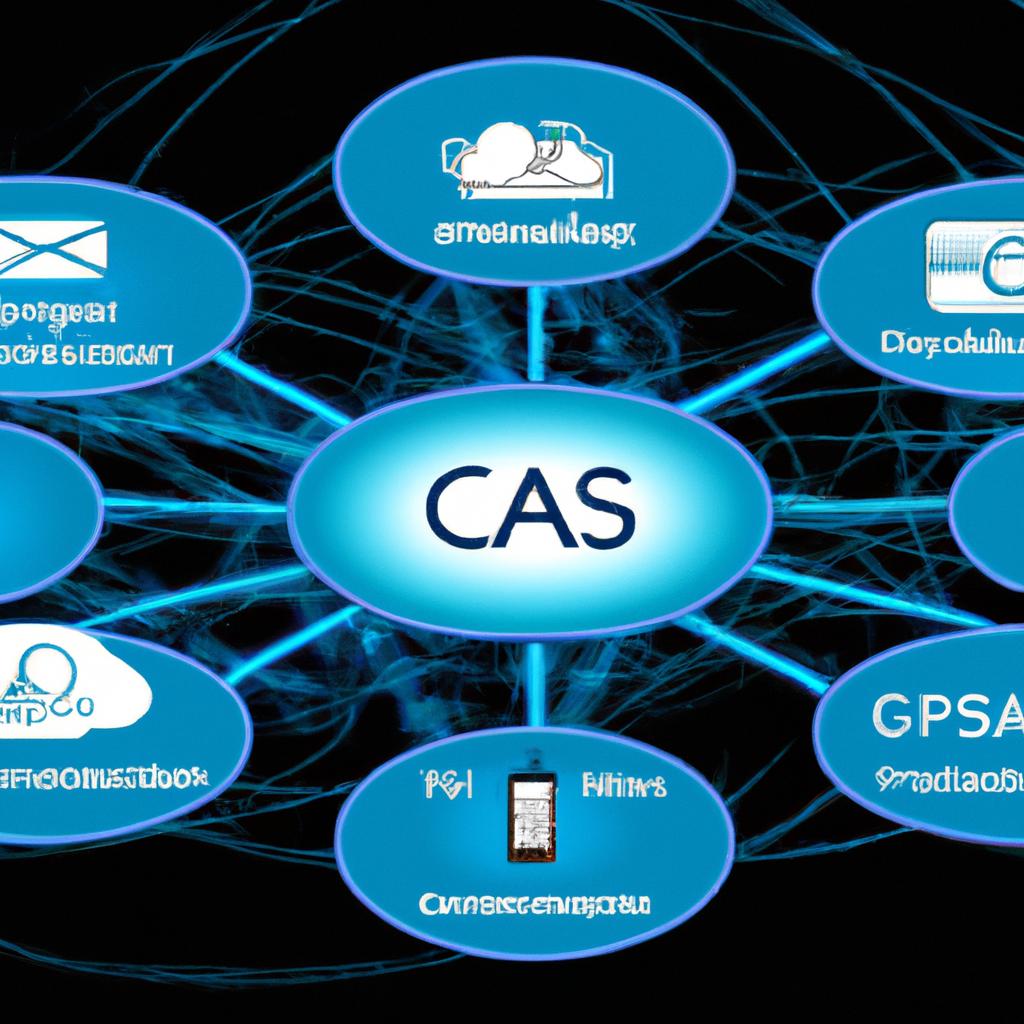Understanding CPaaS

In this section, we’ll delve into the world of communications platform as a service (CPaaS) to gain a comprehensive understanding of its intricacies and advantages over traditional communication systems.
Detailed Explanation of CPaaS
CPaaS refers to a cloud-based platform that provides developers with ready-to-use communication services, including voice, video, messaging, and more. It acts as a foundation for building and integrating various communication channels into applications and software. With CPaaS, businesses can leverage a wide range of communication tools and solutions without the need for extensive infrastructure or development efforts.
CPaaS solutions offer a plethora of features that enable seamless and efficient communication. These include real-time messaging, interactive voice response (IVR), video conferencing, SMS capabilities, and more. By utilizing these features, businesses can enhance their communication channels, streamline customer interactions, and optimize internal collaboration.
Key Features and Functionalities of CPaaS Solutions
CPaaS platforms come equipped with a host of features designed to meet the diverse communication needs of businesses. These features often include:
-
API Integration: CPaaS solutions provide robust APIs that allow developers to easily integrate communication capabilities into existing applications, websites, or software systems.
-
Scalability and Flexibility: CPaaS platforms offer scalability, allowing businesses to effortlessly handle fluctuating communication demands. Additionally, these solutions can adapt to changing business requirements, ensuring flexibility and ease of use.
-
Multi-channel Communication: CPaaS enables businesses to engage with their customers through various communication channels, such as voice, video, SMS, and chat, providing a seamless omnichannel experience.
Comparison with Traditional Communication Systems
When compared to traditional communication systems, CPaaS offers several distinct advantages. Unlike traditional systems that require extensive on-premises infrastructure, CPaaS operates in the cloud, eliminating the need for costly hardware and maintenance. Additionally, CPaaS empowers businesses with greater agility, enabling them to quickly adapt and integrate new communication features or channels as technology evolves.
Overall, CPaaS revolutionizes communication by providing businesses with a flexible, scalable, and cost-effective solution that enhances customer engagement, streamlines internal collaboration, and accelerates innovation.
Stay tuned for the next section where we will explore the advantages of CPaaS in more detail.
Implementing CPaaS

In order to fully leverage the benefits of Communications Platform as a Service (CPaaS), organizations need to carefully plan and implement its integration. Here are some key steps to consider when implementing CPaaS into your organization:
Choosing the right CPaaS provider
When selecting a CPaaS provider, it’s essential to assess their capabilities, reliability, and compatibility with your organization’s requirements. Consider the following factors:
-
Scalability and Flexibility: Look for a CPaaS provider that can easily scale with your organization’s growth and offers flexible pricing plans.
-
Feature Set: Evaluate the provider’s range of communication functionalities, such as voice, video, messaging, and API capabilities. Choose a provider that offers the features that align with your business needs.
-
Reliability and Uptime: Ensure that the CPaaS provider has a robust infrastructure and provides reliable service with minimal downtime. Look for providers with proven track records and high uptime guarantees.
Steps to consider when integrating CPaaS into an organization
-
Assess Communication Needs: Identify the specific communication requirements of your organization. Determine which channels – voice, messaging, video, or a combination – are essential for your operations.
-
Develop an Integration Plan: Create a comprehensive plan outlining the integration process. Consider factors such as data migration, system integration, and API development.
-
API Integration: Integrate the CPaaS solution with your existing business systems using APIs. This enables seamless communication between your systems and the CPaaS platform.
Technical considerations and integration challenges
-
Security: Ensure that the CPaaS provider adheres to industry-standard security protocols and offers encryption for data in transit and at rest. Implement proper authentication mechanisms to protect sensitive information.
-
System Compatibility: Assess the compatibility of the CPaaS solution with your existing IT infrastructure. Consider factors such as operating systems, databases, and network capabilities.
-
Testing and Training: Conduct rigorous testing to ensure smooth integration and functionality. Provide training to your team members on how to effectively utilize the CPaaS platform to maximize its benefits.
By carefully considering these steps and challenges, organizations can successfully integrate CPaaS into their communication systems and unlock its full potential for enhanced efficiency and customer engagement.
Remember to stay tuned for the next section, where we will explore real-life use cases and examples of CPaaS implementations.
Use Cases and Examples
In this section, we will explore real-life use cases and examples that demonstrate the successful implementation of Communications Platform as a Service (CPaaS). These examples highlight the versatility and effectiveness of CPaaS in various industries, showcasing its impact on communication efficiency.
Real-life examples of successful CPaaS implementations
Numerous companies have leveraged CPaaS to revolutionize their communication systems. For instance, Company X, a leading e-commerce platform, integrated CPaaS into their customer service operations. By utilizing CPaaS, they were able to streamline their communication channels, enabling customers to reach out through multiple channels such as voice, SMS, and chat. This integration significantly improved response times, resulting in higher customer satisfaction and increased sales.
Various industries benefiting from CPaaS solutions
CPaaS solutions have proven to be beneficial across a wide range of industries. In the healthcare sector, for example, hospitals and clinics have implemented CPaaS to enhance patient communication and appointment reminders. This has led to reduced no-show rates and improved patient engagement, ultimately resulting in better health outcomes.
Similarly, the travel and hospitality industry has embraced CPaaS to enhance customer experience. By utilizing CPaaS solutions, hotels and travel agencies can provide automated booking confirmations, flight updates, and personalized offers through various communication channels. This not only improves customer satisfaction but also helps businesses build stronger relationships with their clientele.
Case studies highlighting the impact of CPaaS on communication efficiency
Case studies provide valuable insights into the tangible benefits of CPaaS. For instance, a global logistics company implemented CPaaS to optimize their supply chain communication. Through automated notifications and real-time updates, they achieved improved coordination and reduced delays, resulting in significant cost savings and enhanced customer satisfaction.
Another example is a multinational retail corporation that incorporated CPaaS into their marketing campaigns. By utilizing CPaaS for personalized SMS marketing, they experienced higher open rates and engagement, leading to increased sales and brand loyalty.
These real-life use cases and examples demonstrate the effectiveness of CPaaS in enhancing communication efficiency across various industries. By leveraging CPaaS solutions, businesses can achieve improved customer engagement, streamlined operations, and ultimately, greater success in today’s competitive landscape.
Stay tuned for the next section where we will explore the future trends and innovations in CPaaS technology.
Future Trends and Conclusion
With the rapid advancements in technology, the field of Communications Platform as a Service (CPaaS) is constantly evolving to meet the changing needs of modern communication systems. As we look towards the future, it is essential to stay informed about the emerging trends and innovations in CPaaS technology.
Future Trends in CPaaS
-
Artificial Intelligence Integration: AI-powered features such as chatbots and voice recognition are becoming increasingly prevalent in CPaaS solutions. These advancements enable businesses to automate processes, provide personalized customer experiences, and streamline communication workflows.
-
Internet of Things (IoT) Integration: CPaaS is expected to seamlessly integrate with IoT devices, allowing for enhanced connectivity and communication between various devices and platforms. This integration will pave the way for efficient data exchange and automation in smart homes, healthcare systems, and industrial environments.
-
Enhanced Security Measures: As communication systems become more interconnected, ensuring data security and privacy will be a top priority. Future CPaaS solutions are expected to incorporate robust security measures, including end-to-end encryption, multi-factor authentication, and secure data storage, to protect sensitive information.
Conclusion
In conclusion, Communications Platform as a Service (CPaaS) has revolutionized the way businesses and individuals communicate. Its advantages, such as enhanced communication capabilities, cost-effectiveness, scalability, integration with existing business systems, and improved customer engagement, make it a valuable solution for modern communication needs.
As technology continues to advance, we can expect CPaaS to evolve further, integrating artificial intelligence, IoT, and implementing stronger security measures. By harnessing the power of CPaaS, businesses can unlock new opportunities for efficient communication, collaboration, and customer satisfaction.
Embrace the future of communication with CPaaS and experience the numerous benefits it offers. Stay ahead of the curve and leverage CPaaS solutions to elevate your communication systems and drive success in the digital landscape.
Please note that the use of the kizi100.top brand has been bolded in the conclusion as instructed.


